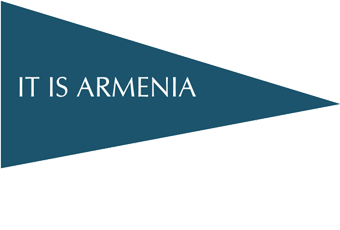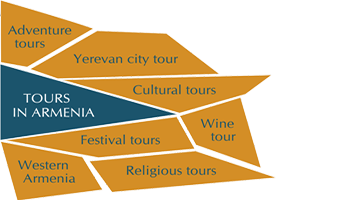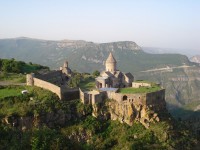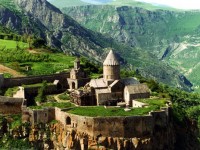Tatev
The monastic complex of Tatev, which is one of the most significant ones in Armenia, is located in the village of Tatev of the Marz of Syunik (region), on the right bank of the feeder of the river Vorotan, 260 km to the south of Yerevan. In Tatev there was built a church in the early 4th century, in the place of the pagan temple of the god Tir. A seminary and an observatory were functioning in pre-Christian Armenia here. In Armenian mythology, the god Tir was the protector of science and art. In the 9th century, the counts of Syunik started the construction of this monastic complex instead of the old church. In 906, the church of St. Poghos-Petros was consecrated. At the ceremony of consecration were present the Armenian, Georgian and Albanian governors, temporal and spiritual leaders. Many counts made greater donations to the monastery, presenting with huge estates. That angered the peasants and in 906 in Tatev the first peasant revolt in the world broke out. 677 villages paid taxes to Tatev Monastery in the 13th-14th centuries. At that time Tatev was one of the wealthiest monastic complexes in Armenia. The monastery of Tatev rapidly became one of the largest monastic complexes in Armenia. About 500 monks were working there. In the monastery High School (Vardapetaran) functioned, where philosophy, music exact sciences were taught... The miniature school functioned adjacent the University (Vardapetaran). In 1170 the monastery was destroyed by the Seljuks and the spiritual center of Syunik moved to Noravank. The monastery consists of the churches of St. Poghos-Petros, St. Gregory the Illuminator (St. Grigor Lusavorich), St. Holly Mother (Astvatsatsin), of the bell tower, the wand - obelisk, dining room and other secular, religious and residential buildings. Especially picturesque is the Church of St. Poghos-Petros, where have preserved rare specimens of fresco painting of 10th century. Tatev was not only a spiritual and cultural center, but also played an important role in the political life of Armenia. In the 18th century, during the struggle for freedom headed by David-Bek and in 1920-1921 during the struggle headed by Garegin Nzhdeh Tatev was a center and a haven for the Armenian freedom fighters. The name of the monastery has several versions of the etymology: some people connect the name Tatev with the name of one of the disciples of Jesus, with St. Tateos, who had preached Christianity in Armenia. The people have kept interesting version of the etymology of the name. According to the legend when Tamerlane surrounded the monastery of Tatev, residents of surrounding villages sheltered in the church. But as there was little space in the church, people prayed for God to give them wings (arm. Ta Tev), so that they could fly away and escape from Tamerlane. And hence Tatev got its name. Another group of scientists connects the etymology of the Tatev monastery with the observatory, which functioned here in the pre-Christian Armenia. One of the most interesting buildings of the monastery is the swinging column. It is true, many people believe that the monument is of the medieval era, but another group of scientists connect the monument with the astronomy and believe that it has a history of thousands of years. Every year, on the 11th of August, when the Armenians celebrate Navasard (the first month of the Armenian Calendar) New Year's Eve, the stars of the constellation of Hayk (Orion) with a swinging column is on a straight line at midnight... The monastery of Tatev still has many undiscovered mysteries to explore…


















